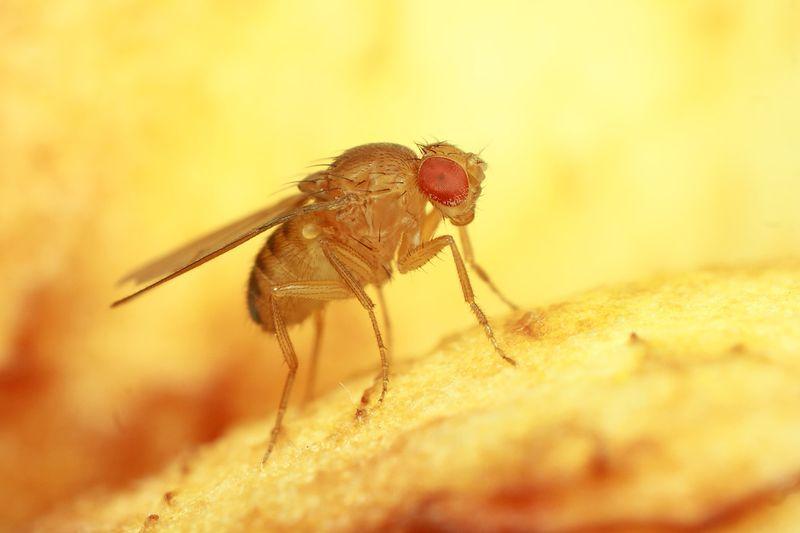As a cultural follower, the fruit fly Drosophila melanogaster can be found almost everywhere in the world where people farm and consume fruit and vegetables. From its original habitat in tropical Africa, the species was introduced into regions with a much cooler climate and had to adapt.
For population geneticists, this is an interesting case in point, as the changes can occur so quickly, within few generations, that they seem difficult to explain using Darwin's evolutionary model.
Dips in variability
There are further examples: Lizards on the Bahamas that adapt their leg length to new vegetation types after tropical storms, the Darwin finches of the Galapagos Islands, which change their beak shape, or the textbook example of industrial melanism: moths, which take on a better camouflaged dark colour in a soot-polluted environment and, with less air pollution, take on their lighter colour again.
How populations can adapt to new environmental conditions within a short period of time is the subject of current research at the Museum für Naturkunde Berlin. "In order to find the genetic basis for rapid adaptations, we are looking for the regions where selection affects the genome," says project leader Wolfgang Stephan.
The impact of natural selection can be seen in the variability of genetic variants in a population: if it decreases sharply at a certain point in the genome, geneticists speak of a "selective sweep" - the selection of a genetic variant that now dominates the population. This not only affects the critical alteration of a gene, but also neighbouring areas of the genome.
Industrial melanism is an example of a character that changes when a single gene is altered. In most cases, however, traits are influenced by more than one gene. For example, hundreds of genes are involved in human body size or the predisposition of high blood pressure. Natural selection may affect a single trait, but leaves traces in the genome at several locations. "It is a topical question how to prove that many genes are involved in an adaptation process," says Stephan - a question that is also key for the development of therapies for "polygenic" diseases.
The group around the evolutionary biologist has developed a computer model to detect the effects of selection in the genome. The researchers feed the information of the decoded genomes of the investigated organisms into the model and they specify known parameters such as rates of recombination and mutation. Recombination leads to the redistribution of genetic material during sexual reproduction. Mutations are random changes that can be caused, for example, by errors in germ cell formation.
For polygenic traits, weak selection can be decisive, affecting many parts of the genome. The model even recognises small changes in genetic variability caused by selection.
Project-title
Modeling and inference of genomic signatures of polygenic selection driving fast adaptation
Duration
01.07.2015 -031.12.2018 and 01.11.2018 – 31.10.2021
Partners
Technical University of Munich
Funding
Deutsche Forschungsgemeinschaft - DFG
